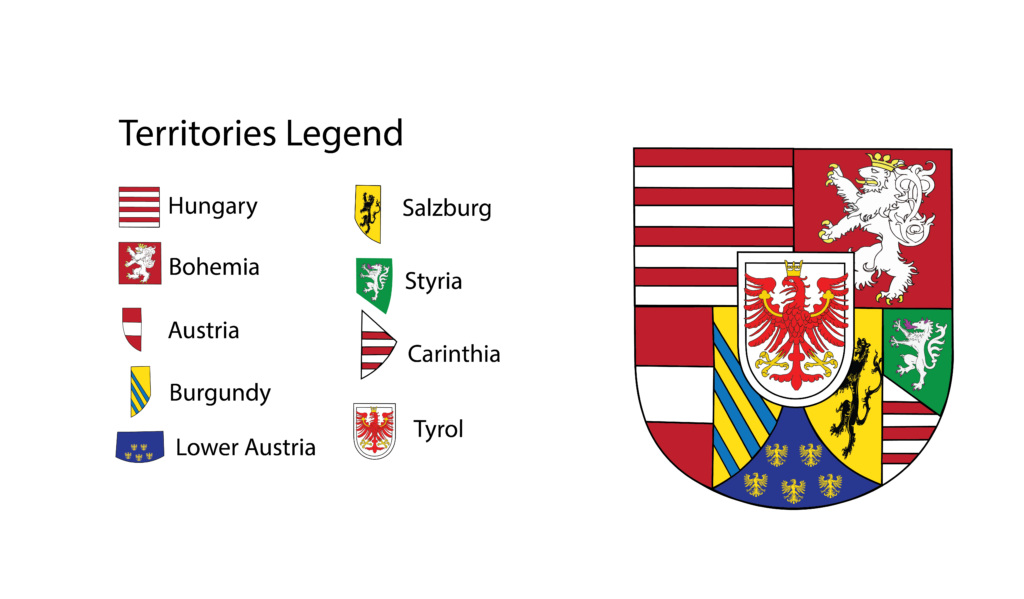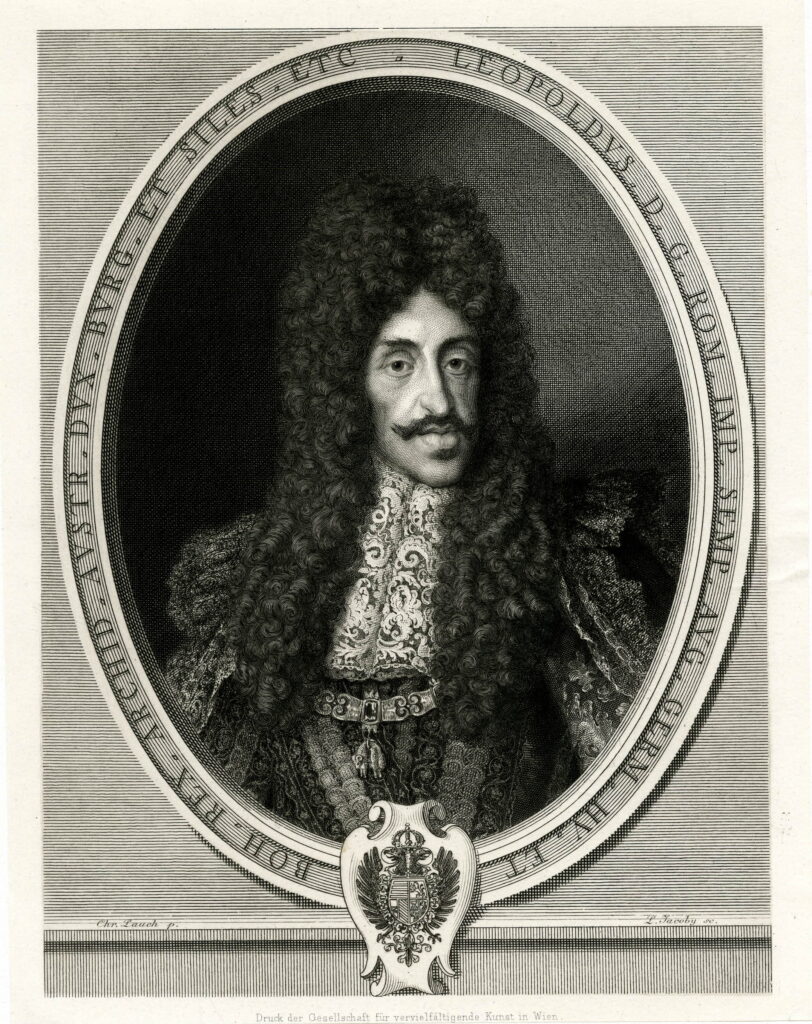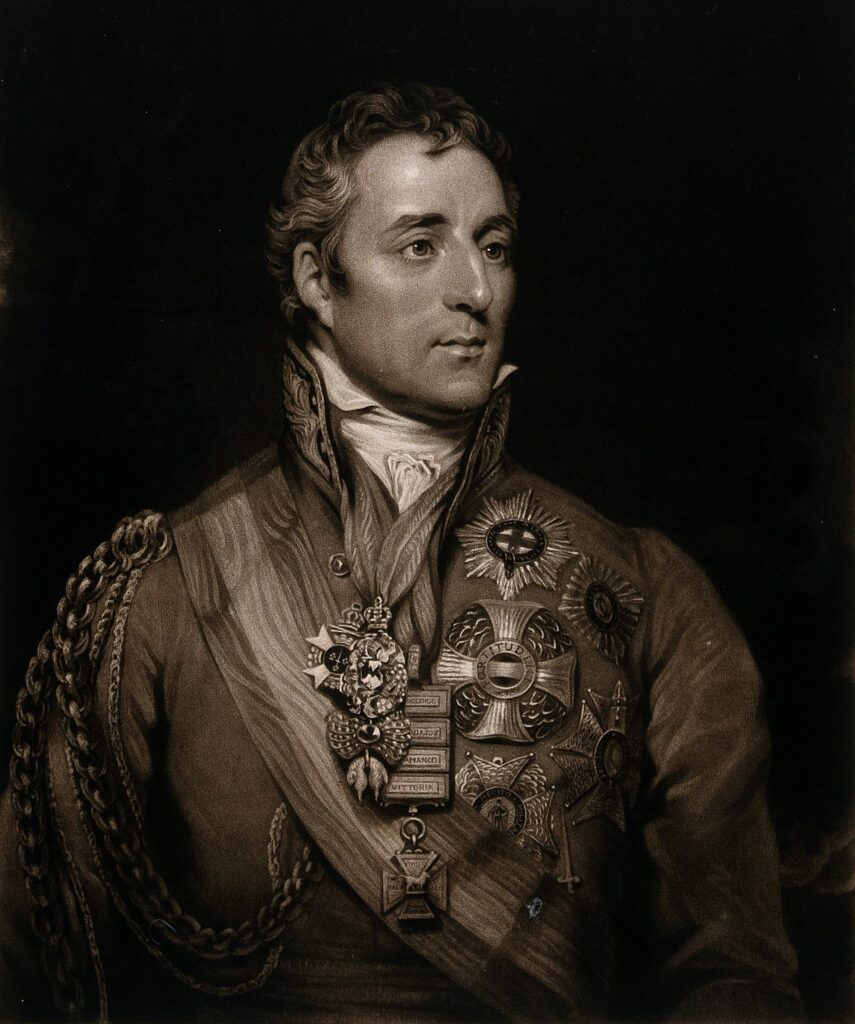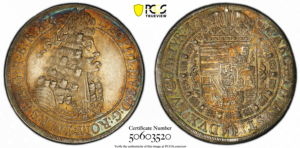
Superb 1701 Austrian Thaler PCGS AU-58 Toned!
Item #CC-0605 | Superb 1701 Austrian Thaler PCGS AU-58 Toned!
Mint: Hall
Ruler/Period: King Leopold I (1640-1705)
Grade: AU-58
For details and population on this coin from PCGS, click on the serial number here: 50603520
Description: This is a rare and superb example of a 1701 Austrian Taler minted during the reign of Leopold I (June 9, 1640 – May 5, 1705). Leopold I was the second son of the emperor Ferdinand III and his first wife Maria Anna of Spain. His maternal grandparents were Philip III of Spain and Margarita of Austria. He was elected as the Holy Roman Emperor from 1658 until his death in 1705 and was a member of the Habsburg dynasty.
Leopold’s reign is marked by significant military conflicts, particularly against the Ottoman Empire and France. His most notable military achievement was his victory in the Great Turkish War (1683-1699). With the help of Prince Eugene of Savoy, Leopold successfully pushed the Ottoman forces back and recovered almost all of the Kingdom of Hungary through the Treaty of Karlowitz. This victory was crucial in securing the Habsburgs’ eastern frontiers and establishing Austria as a major European power.
Leopold also engaged in three other wars: the Franco-Dutch War (1672-1678), the Nine Years’ War (1688-1697), and the War of the Spanish Succession (1701-1714). Although the latter conflict continued beyond his death, Leopold’s efforts in these wars showcased his determination to expand and secure Habsburg influence in Europe.
The Obverse of the Coin Design:
When this coin was designed, a lot of thought was put into the symbolism and details. The obverse side of the coin displays a regal portrait of Leopold I with an armored bust, wearing a curly wig and a laurel wreath. In the 17th century, a laurel wreath (or Laureate) was used by kings as a symbol of triumph, glory and victory, drawing from its ancient Roman tradition where emperors like Julius Caesar wore it to signify their military successes; essentially, it represented their power and glory on the battlefield. If you look closely, Leopold is also adorned with a necklace bearing the Order of the Golden Fleece medallion.
The Latin inscription around the outer rim reads: LEOPOLDVS: D[EI]: G[RATIA]: R[OMANORVM]: I[MPERATOR]: S[EMPER]: A[VGVSTVS]: G[ERMANIAE]: H[VNGARIAE]: B[OHEMIAE]: REX. The translation reads: “Leopold, by the Grace of God, Emperor of the Romans always august, King of Germany, Hungary and Bohemia”
The Reverse of the Coin Design:
 The reverse side of the coin displays the Austrian Habsburg coat of arms displaying many of the territories under the rule of the Holy Roman Empire at the time. Above the shield is the Archducal crown emphasizing the imperial authority and sovereignty of Leopold I. Connected to the crown encircling the shield is an ornate chain with a ram hanging below signifying again the Order of the Golden Fleece.
The reverse side of the coin displays the Austrian Habsburg coat of arms displaying many of the territories under the rule of the Holy Roman Empire at the time. Above the shield is the Archducal crown emphasizing the imperial authority and sovereignty of Leopold I. Connected to the crown encircling the shield is an ornate chain with a ram hanging below signifying again the Order of the Golden Fleece.
Directly below the crown between the top of the Habsburg shield and the bottom of the crown is a small detail that is easy to be missed, yet was significant enough for the engraver to include it as part of the design. What you see here is an eagle with outstretched wings hovering directly above the Habsburg shield. When positioned over a coat of arms, an eagle typically represents:
- Authority and Power: The eagle is a powerful bird of prey and often symbolizes dominion, sovereignty, and control.
- Nobility and Courage: As a symbol of nobility, the eagle signifies bravery, courage, and a noble spirit.
- Victory and Triumph: In many cultures, the eagle is associated with victory, emphasizing the success and achievements of the bearer.
- Protection: Positioned over a coat of arms, the eagle also conveys a sense of guardianship and protection over the family or entity represented by the arms.
The use of an eagle in heraldry has a long history, often reflecting the highest ideals and virtues of the bearers.
Placed centerstage inside the ornate chain is the Habsburg shield representing the territories under the Holy Roman Empire’s rule at the time. The Latin inscription around the outer perimeter reads: ARCHID[VX]: AVST[RIAE]: DVX: BV[RGVNDIAE]: COM[ES]: TYR[OLIS] 1701. The translation in English reads: ” Archduke of Austria, Duke of Burgundy, Count of Tyrol 1701″
The Order of the Golden Fleece
At the very bottom of the coin as well as shown around the neck of Leopold on the obverse is a ram hanging down from a ring, which signifies the Order of the Golden Fleece. Obviously there is something important enough about this symbol to have it engraved twice, so let’s take a look into the meaning of this. This Order of the Golden Fleece was founded in 1430 by Philip the Good, Duke of Burgundy, to commemorate his marriage to Isabella of Portugal. The fleece, or sheepskin, symbolizes key virtues associated with knighthood and chivalry. It also has biblical connotations, referencing the story of Gideon in the Old Testament Book of Judges and the fleece he used to seek divine guidance.
The Golden Fleece specifically represents:
- Abundance and Wealth: The fleece symbolizes prosperity and wealth, reflecting the economic power and resources of the Habsburg dynasty.
- Biblical Connotations: It references the story of Gideon and his fleece from the Bible, symbolizing divine favor and guidance.
- Chivalric Virtues: The order was a mark of high honor, signifying courage, loyalty, and noble behavior among knights.
- Political Power: Including the Golden Fleece on the coat of arms underscored the Habsburgs’ significant influence and connections across Europe, highlighting their prestigious status and alliances.
The Biblical Sign of the Fleece
The story of the sign of the fleece is found in the Old Testament Book of Judges chapter 6 verses 36-40, which states: “So Gideon said to God, “If You will save Israel by my hand as You have said— 37 look, I shall put a fleece of wool on the threshing floor; if there is dew on the fleece only, and it is dry on all the ground, then I shall know that You will save Israel by my hand, as You have said.” 38 And it was so. When he rose early the next morning and squeezed the fleece together, he wrung the dew out of the fleece, a bowlful of water. 39 Then Gideon said to God, “Do not be angry with me, but let me speak just once more: Let me test, I pray, just once more with the fleece; let it now be dry only on the fleece, but on all the ground let there be dew.” 40 And God did so that night. It was dry on the fleece only, but there was dew on all the ground”. https://www.biblegateway.com/passage/?search=Judges%206:36-40&version=NKJV
The Knights of the Golden Fleece were selected for their noble birth and military prowess, and the order was limited to a maximum of 24 living knights at any one time. The order was highly exclusive and prestigious, and membership was highly coveted by the European nobility. Membership in the Order was not exclusive to Austria or Spain.
In 1812, the acting government of Spain conferred the Fleece upon the Duke of Wellington, an act confirmed by Ferdinand on his resumption of power, with the approval of Pope Pius VII. Wellington therefore became the first Protestant to be honored with the Golden Fleece.
The presence of the Golden Fleece on the Habsburg coat of arms served as a powerful reminder of the dynasty’s historical legacy and its far-reaching impact. For more information on the order of the golden fleece, visit: https://en.wikipedia.org/wiki/Order_of_the_Golden_Fleece
The History of the House of Habsburg
The House of Habsburg, also known as the House of Austria, was one of the most prominent and important dynasties in European history. The name Habsburg is derived from the castle of Habsburg, or Habichtsburg (“Hawk’s Castle”), built in the 1020’s by Werner, bishop of Strasbourg, and his brother-in-law, Count Radbot, in what is now Switzerland. Radbot’s grandson, Otto II, was the first to take the fortress name as his own, adding “Count of Habsburg” to his title. In 1273, Count Radbot’s seventh-generation descendant, Rudolph of Habsburg, was elected King of the Romans. Rudolph appointed his sons as Dukes of Austria and moved the family’s power base to Vienna, where the Habsburg dynasty gained the name of “House of Austria” and ruled until 1918.
Sources:
https://www.britannica.com/summary/Leopold-I-Holy-Roman-emperor
Heraldry of the House of Habsburg – Wikipedia https://wappenwiki.org/index.php/House_of_Habsburg-Styria
https://www.habsburger.net/en/persons/habsburg-emperor/leopold-i
Here is a map of Habsburg Territories: Habsburg Lands, c. 1700 | German History in Documents and Images
In stock
$2,750.00



